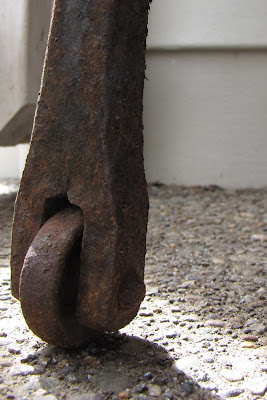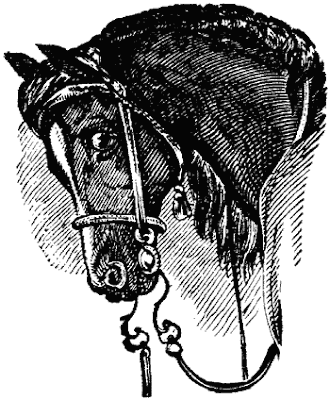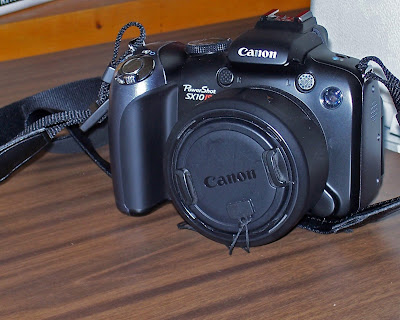
Lawrence Hill's novel
Someone Knows My Name was inspired by "The Book of Negroes," an actual accounting of African slaves granted freedom for assisting the British during the American Revolutionary War. Hill creates the fictional Aminata Diallo who narrates the novel and, through her personal story, relates the experiences of many Africans kidnapped and sold into slavery.
My initial reaction to the book was how plainly and simply it was written after the rich descriptions of Rebecca. However, it is written in Meena's voice and thus entirely appropriate.
The narrative jumps back and forth from 1803 London to various stages of Meena's life during the latter half of the 18th century. In 1745 Meena resides in the village of Bayo with her parents (an inter-tribal marriage). Her father is Muslim, has a copy of the Koran, and can read and write in Arabic. At Meena's insistance, he teaches her to read and write in Arabic even though she is only a girl. It is a period of fear -- since people are disappearing from Bayo and other villages. Even hunters and fishermen travel in groups for safety. Meena is one of the unfortunate ones who is taken by slavers and marched to the coast where she embarks on the Middle Passage to America.
As can be expected, the treatment of Meena and her fellow slaves throughout the book is hard to read. The cruelty of humans never ceases to amaze. But, even though Meena has little control of her life once she is captured, her special abilities open up unique opportunities. She knows more than one tribal language, she can read and write, she is a midwife (a skill learned from her mother), and she is a quick learner. Meena's life journey takes her from Africa to South Carolina, New York, Nova Scotia, Sierra Leone, and finally, London.
We began our discussion of the book with how much we learned. We had been unfamiliar with "The Book of Negroes" and the freed slaves granted land in Nova Scotia by the British. We learned details of the slave trade, the process of making indigo dye, and that some slaves were Muslims.
We talked about slavery itself, a practice as old as human beings. But the commercial and economic aspects of the African slave trade was amazing. Entire industries and the wealth of nations was dependent upon slave labor. This, in turn, brought us to the mind set that allows one group to dehumanize another.
Although we would all like to think we are above such actions, we considered "group think" and how perfectly civilized people can become mean spirited and cruel over a controversial issue. A disagreement over school funding can devolve into death threats between people who used to cooperate in sports team fundraisers.
And interspersed with the socially-accepted cruelties are the individual acts. Meena's story includes inhumane treatment to unexpected kindness as well as surprising betrayals. In the end, she becomes a respected spokesperson for the London abolitionists. Yet even then we sensed she was patronized and used.
Someone Knows My Name takes the reader on an incredible journey and on completing the novel it's amazing to realize where Hill has gone with the story.
The significance of the title, we believe, is one's individual identity. Our names reflect our family connection, which in turn tie us to place and time. Throughout the novel Meena recites the African names of those she meets and of those she's lost contact with. Names humanize the individual. Using a slave's given name rebels against the arbitrary name assigned by the trader or owner. Hill gives the fictional Meena the job of recording the names of the freed slaves in the "Book of Negroes" as they are given passage on British ships to Nova Scotia. She preserves the African names as often as possible.
The slaves that assisted the British during the Revolutionary War were granted freedom, yet Hill reveals it was an empty promise. In Nova Scotia the Africans were forced to live in shanty towns because they had no means to acquire homes and farmland. They were eventually scapegoated when times turned bad and victimized by mobs that attacked their communities. Many of the former slaves leapt at the opportunity to leave Canada to return to Africa where they were again promised freedom. However, in Sierra Leone they discovered their patrons had not secured an agreement with the local tribal chief. As a result, Meena and the others could not move beyond the coastal settlement to establish farms. They became dependent upon the British company that relocated them for their food and supplies. And while they struggled to survive in Sierra Leone they witnessed the slave traders continuing their abhorrent practice.
In London, it was Meena's job to describe the reality of slavery in support of the abolitionist movement. Even here she struggled for the freedom to tell her story in her way. Many thought the reported cruelties of slavery were exaggerated -- until Meena displayed her slave brand. Her patrons repeatedly attempted to "guide" Meena's writing, but she stubbornly kept true to her story. Much to her dismay, the goal of the abolitionists was to end the slave trade, not slavery itself. They acknowledged it was politically and economically impossible at that time to eliminate slavery despite their desire to do so. But Meena took pride in her pivotal role to preserve the names of slaves and the truth of slavery.
We couldn't exactly say we "enjoyed" the book, given the subject matter and inhumane situations depicted. But we were glad we read the novel that challenged the stereotypes of slavery. One of our members wonderfully summed up the novel as a metaphor for Africa and her stolen children.
Our next read: We are venturing into science fiction. I suggested four books that I thought our group might enjoy and we settled on To Say Nothing of the Dog, by Connie Willis. We thought the time travel novel, reportedly very humorous, would make a good change of pace after the serious subject matter of our last read.



















